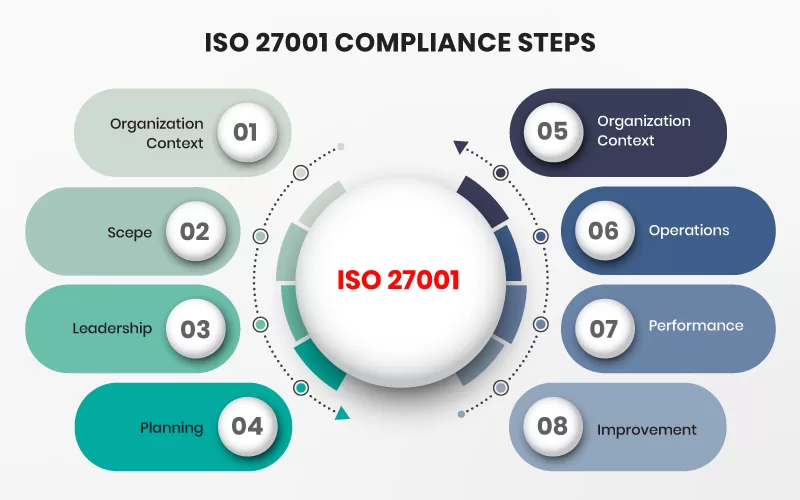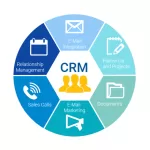Strengthening Digital Trust: ISO 27001 Certification for AlohaX System
In today’s interconnected world, information security is no longer a technical afterthought—it is a strategic cornerstone. For AlohaX System, a global leader in software development, IT solutions, and creative branding, safeguarding digital assets is essential to maintaining client trust, operational integrity, and market leadership. ISO 27001, the internationally recognized standard for Information Security Management Systems (ISMS), offers a structured and scalable framework to achieve this goal.
This article explores the strategic value of ISO 27001 certification, its relevance to AlohaX System’s operations, and the step-by-step process for successful implementation.
Understanding ISO 27001
ISO 27001 is a globally accepted standard that outlines the requirements for establishing, implementing, maintaining, and continually improving an ISMS. It provides a systematic approach to managing sensitive information, ensuring its confidentiality, integrity, and availability through risk management and robust controls.

The standard is designed to be adaptable across industries and organizational sizes. For AlohaX System, which operates across diverse sectors—from custom CRM and mobile apps to e-commerce and branding—ISO 27001 offers a unified security framework that aligns with both technical and creative workflows.
Strategic Benefits for AlohaX System
Implementing ISO 27001 delivers tangible and long-term advantages:
1. Enhanced Client Confidence
Clients entrust AlohaX System with sensitive data, whether through CRM platforms, mobile applications, or branding assets. ISO 27001 certification signals a proactive commitment to data protection, reassuring clients that their information is handled with the highest standards of security.
2. Competitive Differentiation
In a crowded digital marketplace, ISO 27001 sets AlohaX apart. Certification demonstrates maturity in governance and risk management, making the company more attractive to enterprise clients, government tenders, and international partnerships.
3. Operational Resilience
By identifying and mitigating risks, ISO 27001 strengthens AlohaX’s ability to respond to cyber threats, data breaches, and system failures. This resilience is critical for maintaining uptime, protecting intellectual property, and ensuring business continuity.
4. Regulatory Compliance
ISO 27001 helps align internal practices with global data protection regulations such as GDPR, HIPAA, and others. This is especially important for AlohaX’s international operations and clients in regulated industries.
5. Scalable Security Framework
As AlohaX expands its offerings—whether through multilingual branding campaigns or QR-based solutions—the ISO 27001 framework scales with the organization, ensuring consistent security across all touchpoints.
ISO 27001 Implementation Process
Achieving ISO 27001 certification involves a structured process that integrates security into every layer of the organization. Here’s a step-by-step guide tailored to AlohaX System’s strategic and operational context.
Step 1: Define Scope and Objectives
The first step is to clearly define the scope of the ISMS. This includes identifying which departments, systems, and processes will be covered. For AlohaX, this might include software development teams, branding units, client data repositories, and mobile platforms.
Objectives should be aligned with business goals. For example:
- Protect client data across CRM and e-commerce platforms.
- Ensure secure deployment of mobile applications.
- Maintain confidentiality of branding assets and creative IP.
Step 2: Conduct a Gap Analysis
A gap analysis compares current security practices against ISO 27001 requirements. This helps identify vulnerabilities, missing controls, and areas for improvement.
Key questions to explore:
- Are access controls and authentication mechanisms in place?
- Is sensitive data encrypted during transmission and storage?
- Are incident response procedures documented and tested?
- Is there a culture of security awareness across teams?
The findings from this analysis form the foundation for the ISMS design.
Step 3: Risk Assessment and Treatment
Risk assessment is central to ISO 27001. It involves identifying potential threats, evaluating their impact and likelihood, and determining appropriate controls.
For AlohaX, risks may include:
- Unauthorized access to client databases.
- Malware attacks on mobile applications.
- Data leakage during branding asset transfers.
- Insider threats or accidental data loss.
Each risk is treated through mitigation, transfer, acceptance, or avoidance. Controls are selected from ISO 27001’s Annex A, which includes 114 security measures across domains such as access control, cryptography, physical security, and supplier relationships.
Step 4: Develop ISMS Documentation
Documentation is critical for both implementation and audit readiness. Key documents include:
- Information Security Policy
- Risk Assessment and Treatment Plan
- Statement of Applicability
- Asset Inventory
- Access Control Policy
- Incident Management Procedure
- Business Continuity Plan
These documents should be tailored to AlohaX’s workflows, technologies, and cultural context.
Step 5: Implement Controls and Train Teams
With the documentation in place, the next step is to implement the selected controls. This may involve:
- Configuring firewalls and intrusion detection systems.
- Enforcing multi-factor authentication.
- Encrypting data at rest and in transit.
- Establishing secure coding practices for app development.
Equally important is training. All employees—from developers to branding strategists—should understand their role in maintaining information security. Training sessions, awareness campaigns, and simulated phishing exercises can reinforce a security-first mindset.
Step 6: Monitor, Audit, and Improve
ISO 27001 emphasizes continual improvement. AlohaX should establish mechanisms to monitor the effectiveness of controls, detect anomalies, and respond to incidents.
Internal audits should be conducted periodically to assess compliance and identify areas for refinement. Non-conformities should be documented and addressed through corrective actions.
Management reviews are also essential. Leadership should evaluate ISMS performance, allocate resources, and set new objectives based on evolving risks and business priorities.
Step 7: Certification Audit
Once the ISMS is fully implemented and internally validated, AlohaX can engage an accredited certification body to conduct the external audit. The audit typically occurs in two stages:
- Stage 1: Review of documentation and readiness.
- Stage 2: On-site assessment of implementation and effectiveness.
Upon successful completion, AlohaX will receive ISO 27001 certification, valid for three years with annual surveillance audits.
Post-Certification Strategy
Certification is not the end—it’s the beginning of a security-driven culture. AlohaX should integrate ISO 27001 into its branding, client communications, and operational planning. ISO 27001 Certification Consultancy in Kampala:
Suggestions include:
- Displaying certification on websites and proposals.
- Including security credentials in festive campaign messaging.
- Offering secure-by-design guarantees for software products.
- Publishing case studies on how ISO 27001 enhances client outcomes.
This reinforces AlohaX’s reputation as a trusted, forward-thinking partner in both technology and branding.
Conclusion
ISO 27001 Certification Consultancy in Kampala: ISO 27001 certification is a strategic investment for AlohaX System. It aligns with the company’s vision of delivering secure, scalable, and culturally resonant solutions across global markets. By following a structured implementation process and fostering a culture of security, AlohaX can not only protect its digital assets but also elevate its brand in the eyes of clients, partners, and regulators
Top ISO 27001 Consultancy in Kampala Uganda is AlohaX System Read more about ISO 14001






